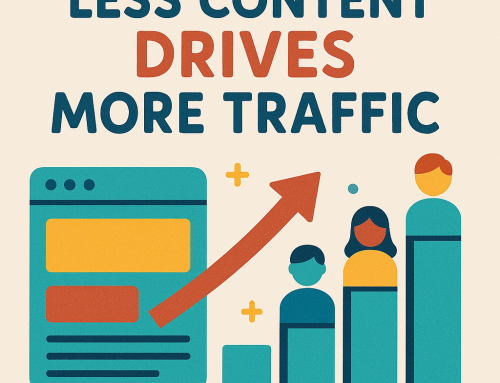Content promotion is something that a lot of people seem to struggle with but I’m here to tell you today that it doesn’t have to be difficult or challenging, even when you haven’t done it before.
There are a series of steps that you can follow that will give you a huge head start, even over those that have been doing this for longer than you.
Before I dive right into this guide and go through all of the ways that you can make this easy, I need to tell you about the mistakes that you need to avoid:
The first mistake that people make is thinking that by creating a piece of content that it automatically deserves to get loads of links, social shares and traffic – in some cases this may be true, but great content promotion starts with the content. If you read your favorite blog and find a piece of content that sucks, are you going to want to help promote it? No.
So start off on the right foot and make your content as engaging and as awesome as possible – if this sounds a bit too vague for you, take a look at your competitors and what they’re doing – then go beyond it.
The second mistake that people make is not devoting enough time to promoting their content, but when you spend 5 hours creating an awesome piece of content, spending 5 minutes promoting it or just clicking publish isn’t enough.
#1 – Create a Checklist
Before you dive into promoting your content you need to know exactly how you’re going to promote it.
To ensure that you are as productive as possible you need to distil this down into a streamlined process that you can use for every post.
This could include:
- Sharing on Twitter, Facebook, Google+, Linkedin and Pinterest
- Emailing your mailing list
- Submitting to niche social networks (e.g. – BizSugar.com, Inbound.org)
- Sharing in social communities (e.g. – G+, Linkedin, Facebook)
- Sharing in other online communities (forums, groups etc)
- Paid advertisements (e.g. – StumbleUpon PD, Sponsored Tweets, Facebook Ads, Outbrain)
- Mentioning people and brands you linked to (Tag in Facebook posts, G+ posts and mention in Tweets)
- Emailing people and brands you linked to
This is not an exhaustive list by any means and this will entirely depend on the vertical or niche that you’re operating in.
Certain social networks might just not work for you and others will. For example, if your content is more business focused, sharing on Linkedin and exploring Linkedin Groups will be more effective.
#2 – Promote Every Post
This may seem trivial, but it’s surprising how often people just click publish and don’t bother promoting a post, or have particular reasons for not promoting certain posts – maybe it’s a guest post that they’re not too concerned about being all that visible.
The truth is that it’s in your best interest to promote every post on your blog or website because it will help you get more traffic, more shares, earn more links and even rank better in Google.
If you have a WordPress based website you can make certain elements of this content promotion thing easier. For example, you can now connect WordPress to your Buffer account which will allow you to automatically share your content. Dev from WP Kube wrote a great guide on how to set this up here.
#3 – Avoid Mindless Link Dropping
I’ve witnessed countless examples of just dropping links in online communities or groups with no thought at all.
This type of thing doesn’t work and makes you look like you don’t have a clue about how to build engagement online.
You need to remember that “real people engage with real people” and there’s actually a real person sitting at the other side of that computer.
Mindless link dropping just looks like spam and will only hurt your reputation online – but if you approach this with the intent to start a discussion on the topic you will be much more successful.
Here’s an example from Reddit a while back:
There’s not a crazy amount of comments but this gets people involved and invested in the discussion and will motivate them to talk about it and hopefully share it.
#4 – Link Out to Influencers and ask Them to Share
When you first start off you’re essentially just promoting content to a non-existent audience, but what if you could tap into someone else’s audience with minimal effort?
Well you can and the easiest way to do this is just link out to an influencer within your industry – the important thing is mentioning them in a positive light.
The next step is to ask them to share which can be done easily on Twitter, but it’s worth backing this up by emailing them directly.
Sometimes just mentioning the person or company you’ve linked to is enough and this can work on a cross platform basis. For example, in a recent blog post I wrote for Benchmark Email I linked out to Rafflecopter and mentioned them on Google Plus – within 5 minutes they shared my tweet with their 260,000+ Twitter followers.
The reason this works is because when an influencer shares your post with their followers it increases the perceived authority of the influencer to their followers.
There are particular things you need to remember if you go the email route because sending out a bunch of generic emails just won’t work. Like content promotion, blogger outreach doesn’t have to be difficult, something I show you here.
#5 – Tap into Social Communities
I mentioned social communities earlier on but I wanted to draw some closer attention to it because when done right, it can have great results. When you produce the right content other people will share your content in social communities and the effect can be extremely impressive.
For example, In September I published a blog post that was then shared in a LinkedIn group by one of my readers. This subsequently brought 1,300+ visitors to my site over the course over 20 or so days.
I’m not saying that every time you or someone else shares your content in a community on Google Plus or Linkedin would bring this sort of traffic, but if you don’t try, then chances are it won’t happen.
There are also other benefits that search engines such as Google will take into account such as positive social signals. For example, there is a huge correlation between G+1′s and positive rankings in Google.
#6 – Use Triberr
I couldn’t write a post on promoting content without including one of the most effective content promotion tools of them all – Triberr.
The way that Triberr works is that it brings people with similar interests together into ‘Tribes’. When you join a tribe as a follower, you can share the content of full members, and when you get promoted to a full member, you can then import the RSS feed from your blog and the other tribe members will have the opportunity to share your content.
The great thing about Triberr is that the majority of people that use it already have their own established audience and it’s a great way to immediately get your content shared by industry influencers.
Summary
Now you have a road map for promoting your content in a way that will get you results. The important thing is that you now put this into action, create great content and devote the time that you need in order to promote it effectively.
The worst thing would be for you to spend all of your time creating this great piece of content and for it to just gather dust in a corner, never to see the light of day when it could make such a big difference to so many people.
Do you have any content promotion strategies to add? We’d love to hear more about them in the comments section below
By Adam Connell








